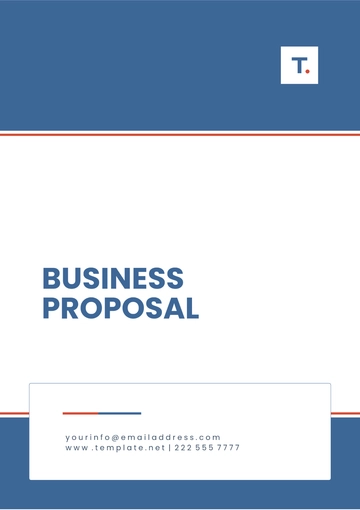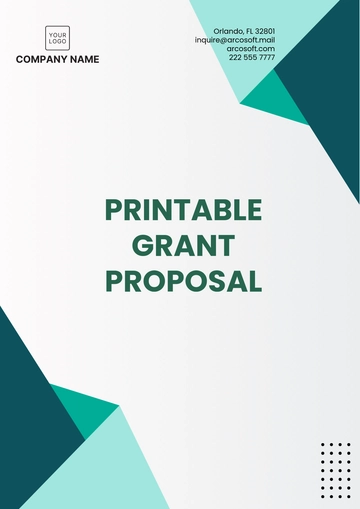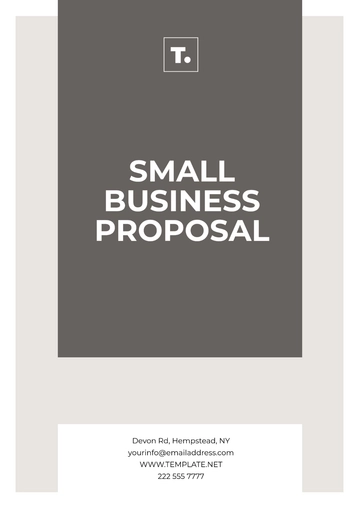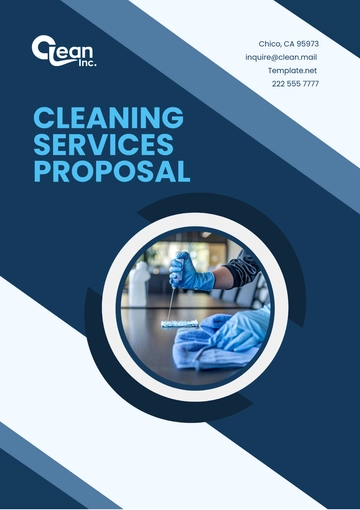Free PPE Acquisition Proposal

1. Introduction
Purpose of the Proposal
This proposal aims to address the vital need for Personal Protective Equipment (PPE) in our organization. In light of recent safety audits and evolving workplace safety regulations, upgrading and systematically managing our PPE supplies has become imperative. The goal is to enhance the safety and well-being of our employees while ensuring compliance with national safety standards.
Overview of PPE Importance
PPE plays a crucial role in mitigating workplace hazards. From reducing the risk of physical injuries in high-risk environments like manufacturing and maintenance to safeguarding against chemical exposure in laboratories, PPE is an essential element of our workplace safety strategy. Furthermore, in light of ongoing health concerns, such as the COVID-19 pandemic, PPE like masks and sanitizers have become indispensable in everyday office settings as well.
2. Current PPE Needs Assessment
Identification of PPE Requirements
In assessing the needs of various departments, we have identified specific PPE requirements essential for employee safety. For instance, our manufacturing department requires heavy-duty gloves, safety goggles, and steel-toe boots due to their frequent handling of hazardous materials and machinery. Meanwhile, the laboratory staff needs chemical-resistant gloves, face shields, and lab coats to protect against chemical spills and splashes.
Table 1: Department-wise PPE Requirements
Department | Identified PPE Needs |
Manufacturing | Heavy-duty gloves, Safety goggles, Steel-toe boots |
Laboratory | Chemical-resistant gloves, Face shields, Lab coats |
Maintenance | Ear protection, Dust masks, Safety helmets |
Administrative | Hand sanitizers, Surgical masks (for pandemic situations) |
Risk Analysis
Our risk analysis is based on recent incident reports and safety audits. The manufacturing department has a high risk of physical injuries due to machinery, necessitating robust protective gear. The laboratory faces chemical hazards, requiring specialized PPE to prevent burns and inhalation risks. Maintenance workers are exposed to noise pollution and airborne particles, requiring ear protection and dust masks. Finally, administrative staff need basic protection against infectious diseases, particularly in pandemic scenarios.
Table 2: Risk Assessment and PPE Requirements
Department | Identified Risks | Required PPE |
Manufacturing | Machinery-related injuries | Heavy-duty gloves, Safety goggles, Steel-toe boots |
Laboratory | Chemical spills and splashes | Chemical-resistant gloves, Face shields, Lab coats |
Maintenance | Noise pollution, Airborne particles | Ear protection, Dust masks, Safety helmets |
Administrative | Communicable diseases | Hand sanitizers, Surgical masks |
3. PPE Standards and Regulations Compliance
Regulatory Requirements
Our PPE selection is guided by strict adherence to Occupational Safety and Health Administration (OSHA) standards. OSHA's guidelines for eye and face protection (29 CFR 1910.133), hand protection (29 CFR 1910.138), and respiratory protection (29 CFR 1910.134) are particularly relevant. Additionally, we comply with ANSI standards for specific PPE items, ensuring the highest level of safety and quality.
Compliance Strategies
To ensure compliance, we will engage in a rigorous vetting process of PPE suppliers, ensuring that their products meet or exceed OSHA and ANSI standards. Regular training sessions will be conducted to educate employees on the proper use and maintenance of PPE. Additionally, we will establish a compliance committee responsible for conducting periodic reviews and audits of PPE use in the workplace to ensure ongoing adherence to safety regulations.
Table 3: Compliance Strategies for PPE
Strategy Element | Description |
Supplier Vetting | Ensuring suppliers meet OSHA and ANSI standards |
Employee Training | Regular training sessions on PPE usage and maintenance |
Compliance Committee | Periodic reviews and audits of PPE use and standards adherence |
4. Vendor Selection and Cost Analysis
Potential Vendors
After a thorough market analysis, we have identified several potential vendors for our PPE requirements. 'SafeGear Inc.' stands out for its wide range of high-quality safety equipment and competitive pricing. 'ProShield Ltd.' is renowned for its innovative and durable PPE products, although at a slightly higher cost. Lastly, 'EcoSafe Solutions offers environmentally sustainable PPE options, aligning with our organization's commitment to environmental responsibility.
Table 3: Potential Vendors for PPE
Vendor Name | Product Range | Quality Rating | Cost Efficiency | Eco-Friendliness |
SafeGear Inc. | Wide Range | High | High | Moderate |
ProShield Ltd. | Innovative Products | Very High | Moderate | Low |
EcoSafe Solutions | Eco-friendly Options | Moderate | Moderate | High |
Cost-Benefit Analysis
The cost-benefit analysis compares the initial investment in quality PPE with the potential reduction in workplace accidents and associated costs. Investing in higher-quality PPE from 'ProShield Ltd.' may have a higher upfront cost but can lead to long-term savings by reducing injury-related downtime and compensation claims. Alternatively, 'SafeGear Inc.' offers a more cost-effective solution without significantly compromising on quality.
Table 4: Cost-Benefit Analysis
Vendor | Initial Cost Estimate | Estimated Annual Savings in Accident-Related Costs | Payback Period |
SafeGear Inc. | $50,000 | $15,000 | 3.3 Years |
ProShield Ltd. | $70,000 | $20,000 | 3.5 Years |
EcoSafe Solutions | $60,000 | $10,000 | 6.0 Years |
5. Training and Implementation Plan
Employee Training Programs
We propose a comprehensive training program to ensure proper usage and maintenance of PPE. The program will cover topics such as correct fitting, usage guidelines, and care instructions. We plan to collaborate with 'SafetyFirst Trainers', a specialized firm in occupational safety training, to conduct these sessions.
Table 5: Employee Training Program Schedule
Department | Training Topic | Scheduled Date | Trainer |
Manufacturing | Machinery Safety & PPE Usage | March 10, 2050 | SafetyFirst Trainers |
Laboratory | Chemical Handling & PPE | March 17, 2050 | SafetyFirst Trainers |
Maintenance | Noise & Dust Protection | March 24, 2050 | SafetyFirst Trainers |
Administrative | Basic PPE & Hygiene | March 31, 2050 | SafetyFirst Trainers |
Implementation Timeline
The implementation of the PPE program will be rolled out in phases. Initially, we will focus on the departments with the highest risk levels, gradually expanding to encompass all areas of the organization. The timeline includes the procurement of PPE, training sessions, and full-scale deployment.
Table 6: PPE Implementation Timeline
Phase | Activities | Start Date | End Date |
Phase 1 | Procurement & Initial Distribution | April 1, 2050 | April 30, 2050 |
Phase 2 | Training Sessions | May 1, 2050 | June 30, 2050 |
Phase 3 | Full-Scale Deployment | July 1, 2050 | August 31, 2050 |
This phased approach ensures a smooth transition and allows for any adjustments based on feedback during the early stages of implementation.
6. Monitoring and Maintenance
PPE Usage Monitoring
To ensure the effective use of PPE, we will implement a monitoring system. This system will include routine checks and audits by our safety officers. Each department will have a designated PPE monitor who will oversee the correct usage and report any non-compliance or issues.
Table 7: PPE Monitoring Schedule
Department | Monitoring Frequency | Responsible Officer |
Manufacturing | Weekly | John Smith |
Laboratory | Bi-weekly | Emily Davis |
Maintenance | Monthly | Mark Lee |
Administrative | Quarterly | Sarah Johnson |
Maintenance and Replacement Schedules
Regular maintenance and timely replacement of PPE are crucial. We propose a maintenance schedule based on the manufacturer's recommendations and usage intensity. A tracking system will be implemented to monitor the lifecycle of each PPE item and schedule replacements accordingly.
Table 8: PPE Maintenance and Replacement Schedule
PPE Item | Maintenance Frequency | Replacement Period |
Safety Goggles | Monthly inspection | Every 2 years |
Chemical-resistant Gloves | After every use | Annually |
Dust Masks | Weekly inspection | Every 6 months |
Steel-toe Boots | Quarterly inspection | Every 3 years |
7. Environmental and Sustainability Considerations
Eco-friendly PPE Options
Recognizing our responsibility towards the environment, we will prioritize eco-friendly PPE options. This includes biodegradable materials, reusable PPE, and products with minimal environmental impact. 'EcoSafe Solutions' offers a range of such products that align with our sustainability goals.
Table 9: Eco-friendly PPE Options
PPE Item | Eco-friendly Feature | Supplier |
Biodegradable Gloves | Made from plant-based materials | EcoSafe Solutions |
Reusable Face Shields | Durable and cleanable | EcoSafe Solutions |
Recyclable Safety Helmets | Made from recyclable plastics | EcoSafe Solutions |
Disposal and Recycling Plans
We propose a structured disposal and recycling plan for used and expired PPE. This includes partnering with local recycling facilities to manage non-biodegradable waste and establishing disposal protocols for hazardous materials.
Table 10: PPE Disposal and Recycling Plan
PPE Item | Disposal Method | Recycling Partner |
Disposable Gloves | Hazardous waste bins | GreenCycle Co. |
Used Masks | Specialized disposal units | MaskRecycle Ltd. |
Expired Helmets | Recycle bins for plastics | PlastiPure Inc. |
These initiatives will help reduce our environmental footprint and promote sustainability within our organization.
8. Conclusion
Summary of Proposal Benefits
The implementation of this PPE acquisition and management plan will significantly enhance the safety and well-being of our employees. By addressing the specific needs of each department and ensuring compliance with safety standards, we reduce the risk of workplace accidents and injuries. The proposal also aligns with our environmental commitments through the inclusion of eco-friendly PPE options and responsible disposal practices. Moreover, the training and monitoring measures will foster a culture of safety and awareness among staff.
Cost-Effectiveness and Long-Term Impact
The cost-benefit analysis indicates that the proposed investment in high-quality PPE will yield long-term savings by reducing the frequency and severity of workplace injuries. The eco-friendly PPE options, while supporting our commitment to sustainability, also offer potential savings in waste management.
Recommendations for Approval and Implementation
Approve the proposed budget for the procurement of PPE.
Endorse the selected vendors and authorize the initiation of purchase orders.
Schedule and commence the proposed employee training programs.
Implement the monitoring and maintenance schedules for PPE.
Begin collaboration with recycling partners for sustainable disposal of PPE.
The successful implementation of this proposal requires the collective effort and commitment of all departments. We urge prompt approval to initiate this crucial step towards enhancing our workplace safety standards. The health and safety of our employees are paramount, and this proposal represents a significant stride in safeguarding their well-being.
- 100% Customizable, free editor
- Access 1 Million+ Templates, photo’s & graphics
- Download or share as a template
- Click and replace photos, graphics, text, backgrounds
- Resize, crop, AI write & more
- Access advanced editor
Introducing the PPE Acquisition Proposal Template from Template.net. This editable and customizable template streamlines your procurement process. Crafted to perfection, it's editable in our Ai Editor Tool, ensuring efficiency and precision. Elevate your PPE acquisition strategy effortlessly with this essential tool. Get yours now and make procurement seamless.
You may also like
- Business Proposal
- Research Proposal
- Proposal Request
- Project Proposal
- Grant Proposal
- Photography Proposal
- Job Proposal
- Budget Proposal
- Marketing Proposal
- Branding Proposal
- Advertising Proposal
- Sales Proposal
- Startup Proposal
- Event Proposal
- Creative Proposal
- Restaurant Proposal
- Blank Proposal
- One Page Proposal
- Proposal Report
- IT Proposal
- Non Profit Proposal
- Training Proposal
- Construction Proposal
- School Proposal
- Cleaning Proposal
- Contract Proposal
- HR Proposal
- Travel Agency Proposal
- Small Business Proposal
- Investment Proposal
- Bid Proposal
- Retail Business Proposal
- Sponsorship Proposal
- Academic Proposal
- Partnership Proposal
- Work Proposal
- Agency Proposal
- University Proposal
- Accounting Proposal
- Real Estate Proposal
- Hotel Proposal
- Product Proposal
- Advertising Agency Proposal
- Development Proposal
- Loan Proposal
- Website Proposal
- Nursing Home Proposal
- Financial Proposal
- Salon Proposal
- Freelancer Proposal
- Funding Proposal
- Work from Home Proposal
- Company Proposal
- Consulting Proposal
- Educational Proposal
- Construction Bid Proposal
- Interior Design Proposal
- New Product Proposal
- Sports Proposal
- Corporate Proposal
- Food Proposal
- Property Proposal
- Maintenance Proposal
- Purchase Proposal
- Rental Proposal
- Recruitment Proposal
- Social Media Proposal
- Travel Proposal
- Trip Proposal
- Software Proposal
- Conference Proposal
- Graphic Design Proposal
- Law Firm Proposal
- Medical Proposal
- Music Proposal
- Pricing Proposal
- SEO Proposal
- Strategy Proposal
- Technical Proposal
- Coaching Proposal
- Ecommerce Proposal
- Fundraising Proposal
- Landscaping Proposal
- Charity Proposal
- Contractor Proposal
- Exhibition Proposal
- Art Proposal
- Mobile Proposal
- Equipment Proposal
- Student Proposal
- Engineering Proposal
- Business Proposal





























